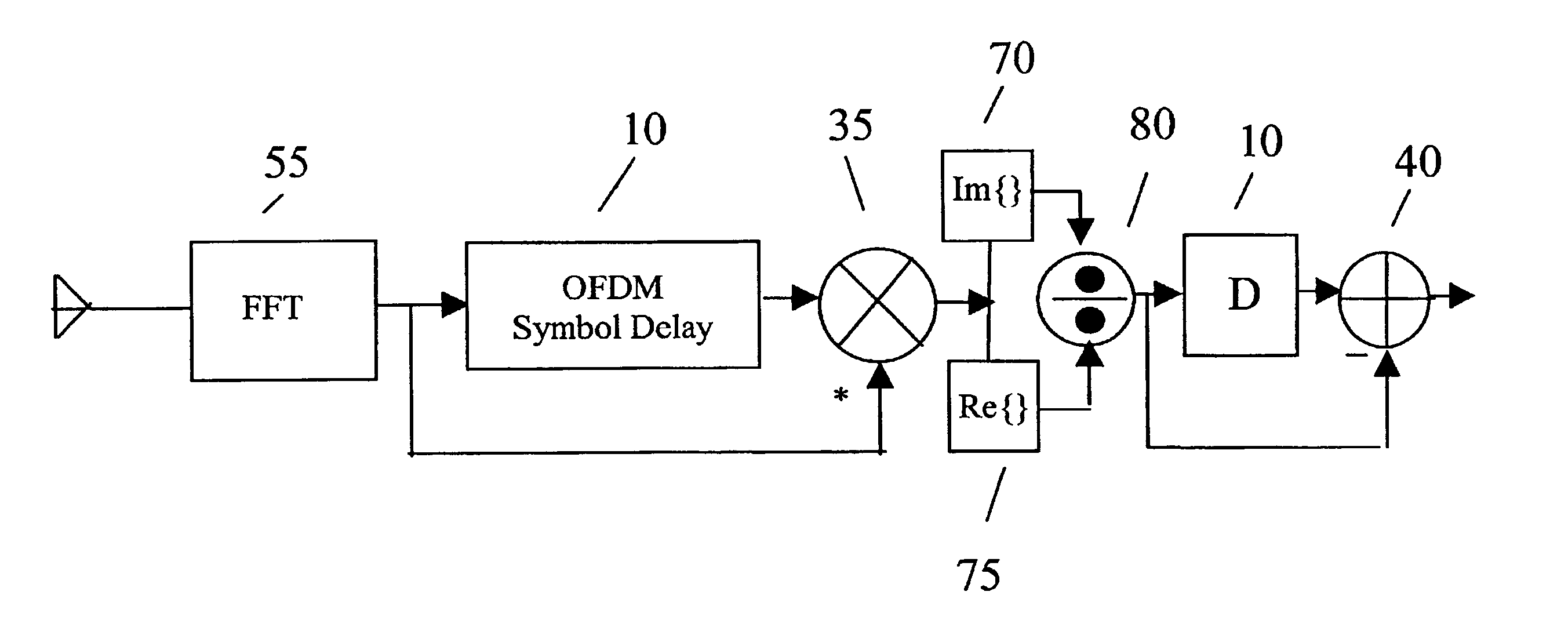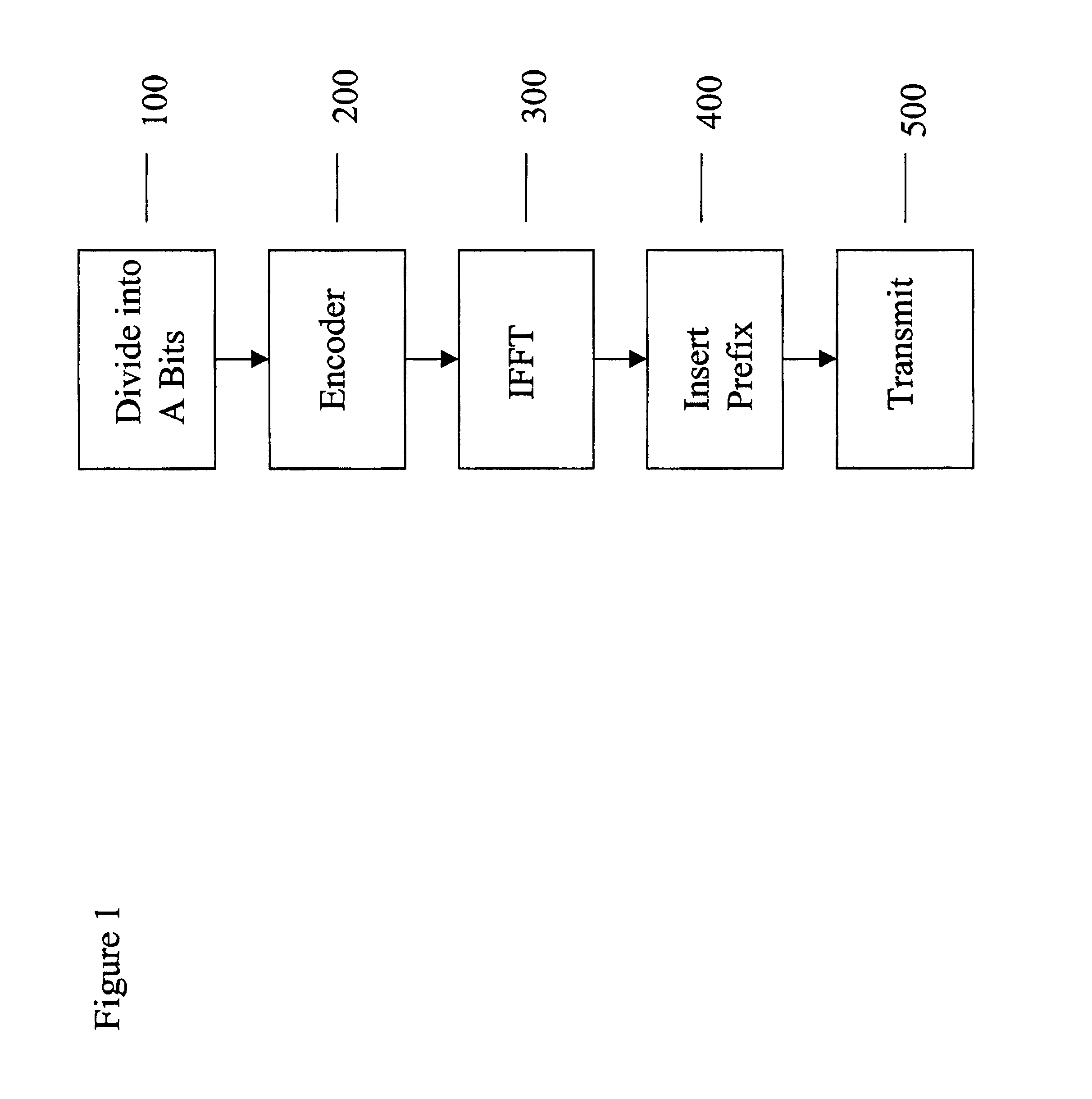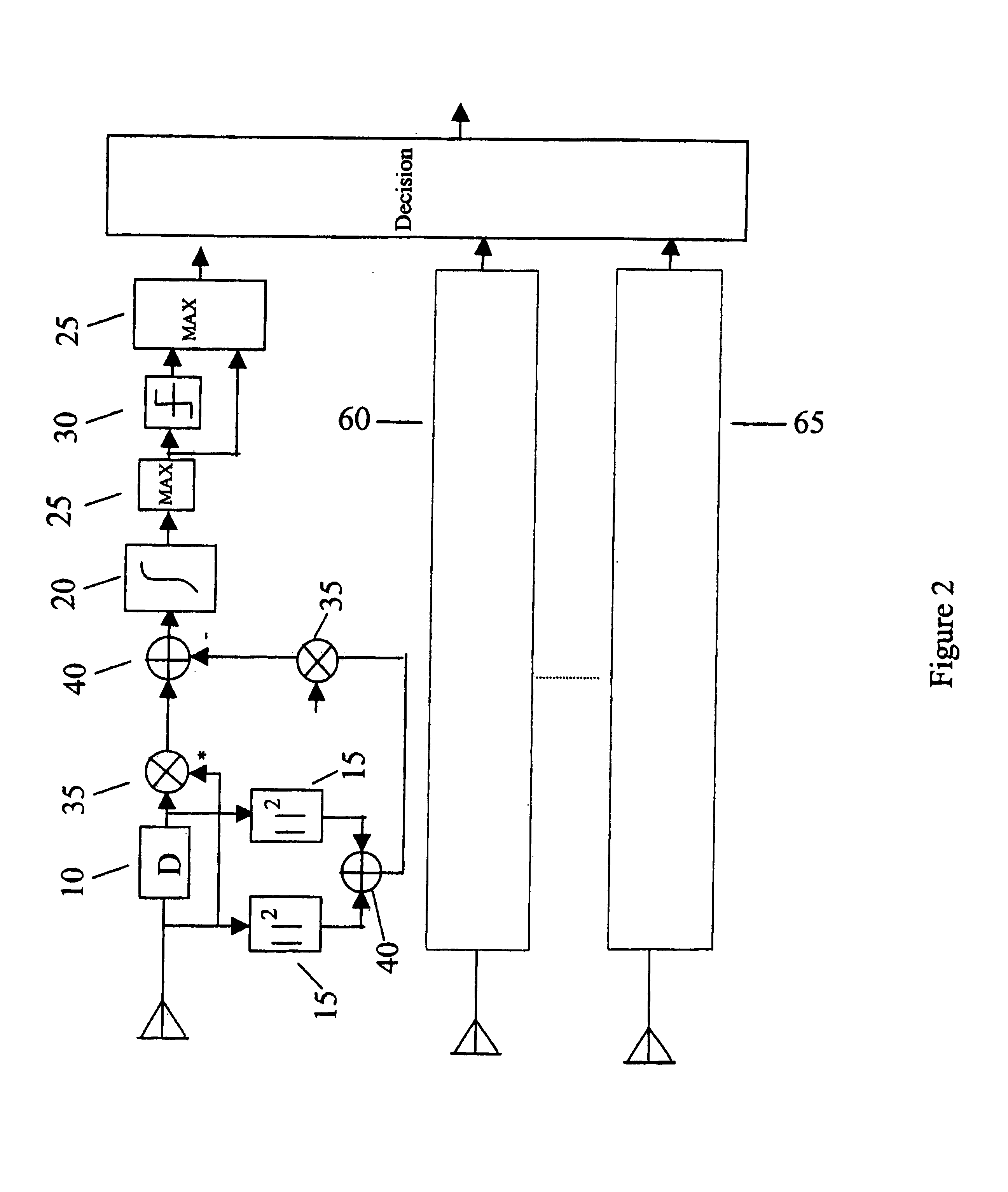Synchronization in a multiple-input/multiple-output (MIMO) orthogonal frequency division multiplexing (OFDM) system for wireless applications
- Summary
- Abstract
- Description
- Claims
- Application Information
AI Technical Summary
Problems solved by technology
Method used
Image
Examples
Embodiment Construction
[0019]FIG. 1 illustrates an OFDM transmission in a single-input / single-output (SISO) system.
[0020]Referring to FIG. 1, a set of bits are to be transmitted via a radio-frequency (RF) transmission to a receiving location. The set of bits is divided into segments of A bits at step 100 and input into an encoder every Tp+Ts seconds at step 200, where Ts is an OFDM symbol interval, and Tp is a cyclic prefix or guard interval. The encoder then sub-divides the A bits into N sub-segments of m bits. For example, a stream of bits that is to be transmitted may be input into the encoder in segments of 1024 bits. The encoder then divides the 1024 bits into 256 sub-segments of 4 bits each. Thus, in this example, A=1024, m=4, N=256. These numbers are illustrative only and are not intended to limit the scope of the invention.
[0021]An OFDM transmission may employ N+1 sub-carriers, including a zero frequency DC sub-carrier that is not used to transmit data. The encoder may further perform a modulation...
PUM
 Login to View More
Login to View More Abstract
Description
Claims
Application Information
 Login to View More
Login to View More - R&D
- Intellectual Property
- Life Sciences
- Materials
- Tech Scout
- Unparalleled Data Quality
- Higher Quality Content
- 60% Fewer Hallucinations
Browse by: Latest US Patents, China's latest patents, Technical Efficacy Thesaurus, Application Domain, Technology Topic, Popular Technical Reports.
© 2025 PatSnap. All rights reserved.Legal|Privacy policy|Modern Slavery Act Transparency Statement|Sitemap|About US| Contact US: help@patsnap.com



